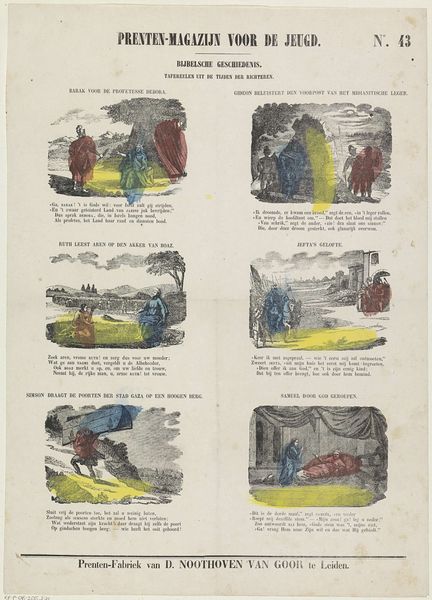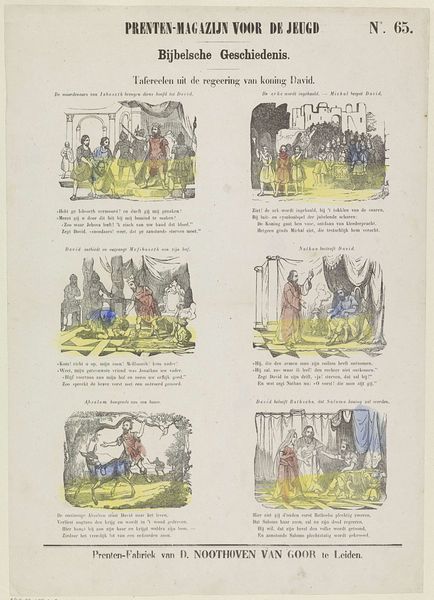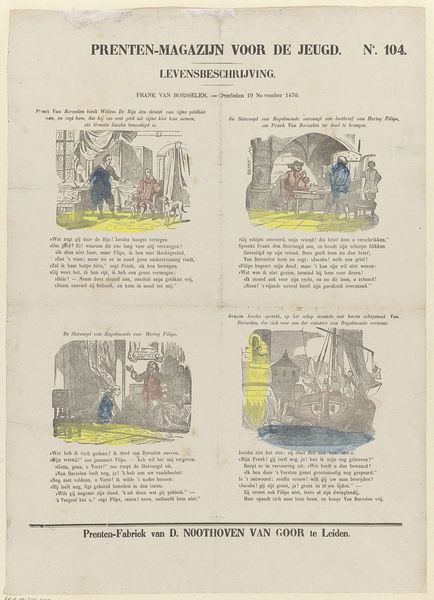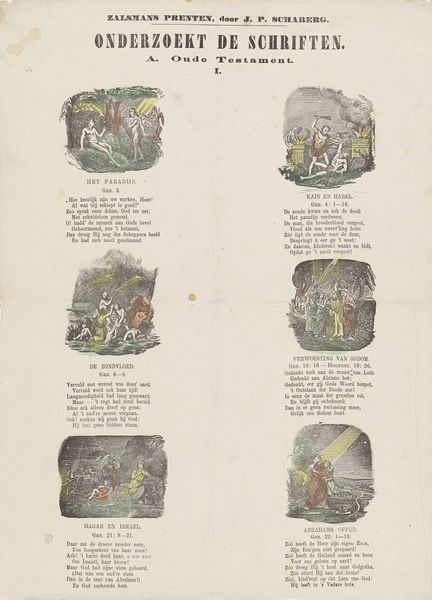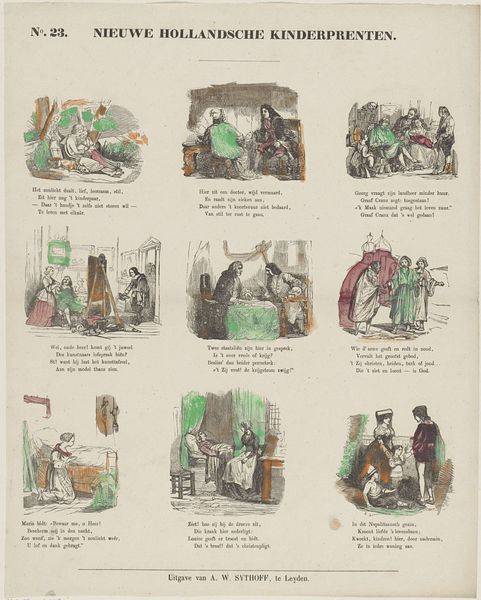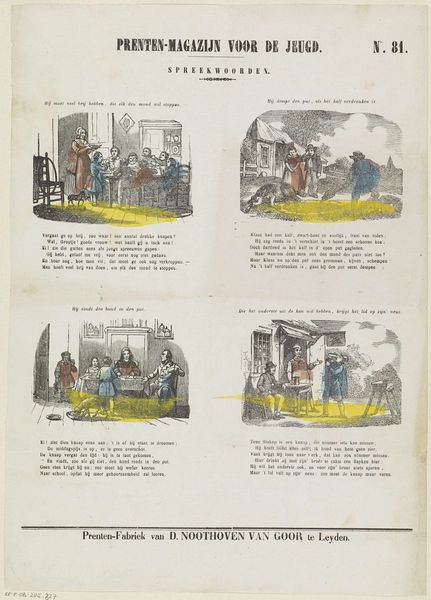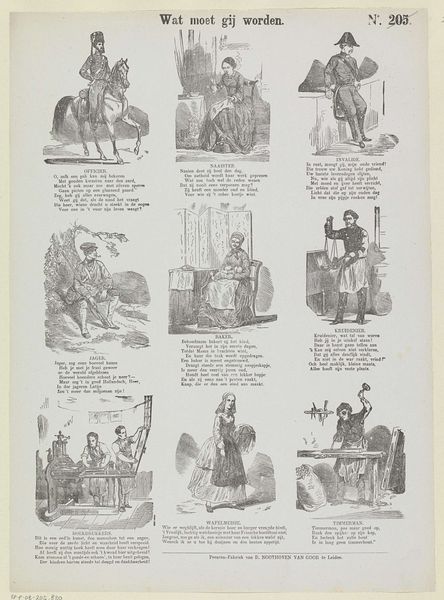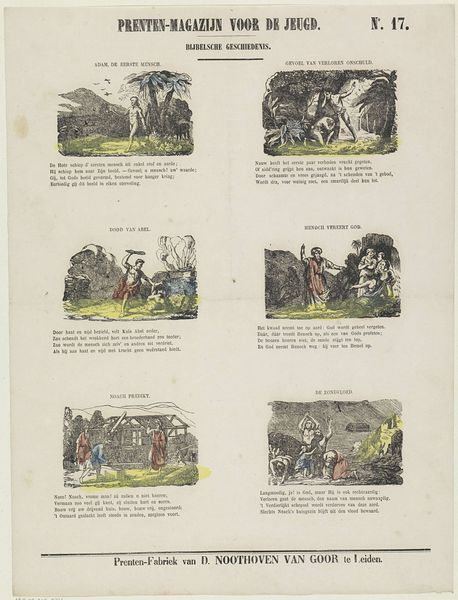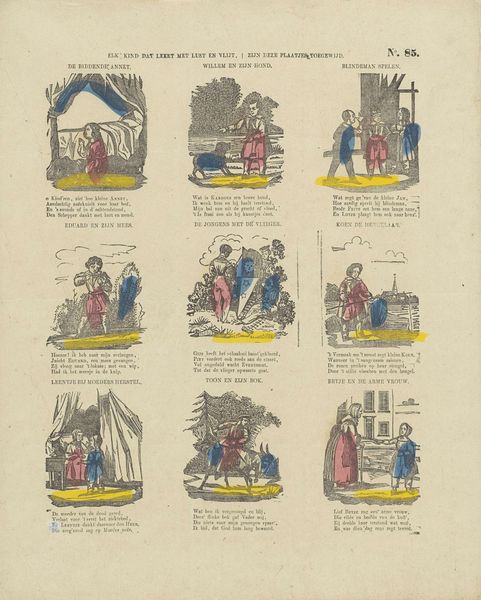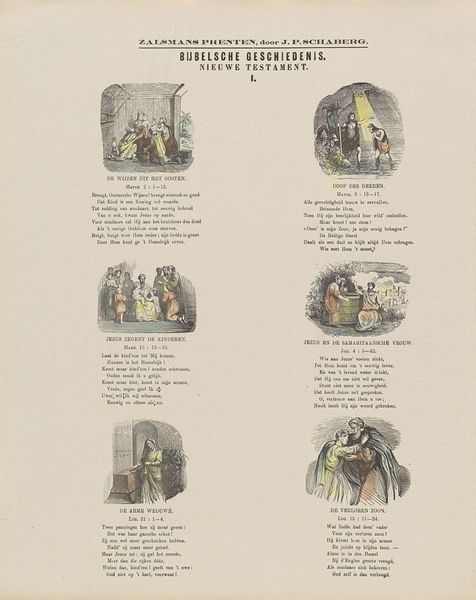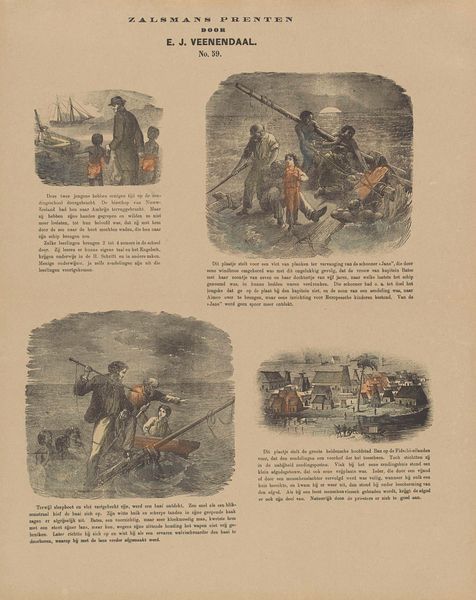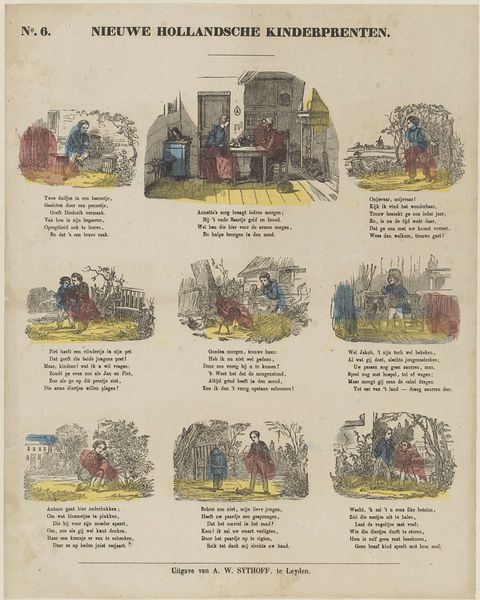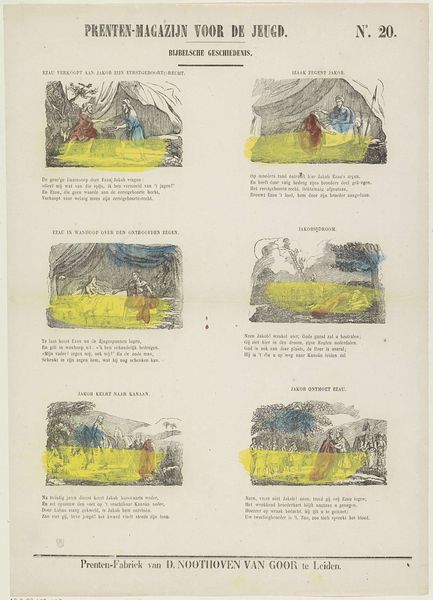![Hier zien wij weêr den nijvren man [(...)] by Albertus Willem Sijthoff](/_next/image?url=https%3A%2F%2Fd2w8kbdekdi1gv.cloudfront.net%2FeyJidWNrZXQiOiAiYXJ0ZXJhLWltYWdlcy1idWNrZXQiLCAia2V5IjogImFydHdvcmtzLzlkNGE5YWM4LWY3MjItNDYwYi05MzJlLWJkOGY1ZDY5NDRiMC85ZDRhOWFjOC1mNzIyLTQ2MGItOTMyZS1iZDhmNWQ2OTQ0YjBfZnVsbC5qcGciLCAiZWRpdHMiOiB7InJlc2l6ZSI6IHsid2lkdGgiOiAxOTIwLCAiaGVpZ2h0IjogMTkyMCwgImZpdCI6ICJpbnNpZGUifX19&w=3840&q=75)
print, etching
#
narrative-art
#
dutch-golden-age
# print
#
etching
#
watercolor
Dimensions: height 391 mm, width 315 mm
Copyright: Rijks Museum: Open Domain
Curator: Here, we have a fascinating piece titled "Hier zien wij weêr den nijvren man" which translates to "Here we see the industrious man again," a print created sometime between 1861 and 1929 by Albertus Willem Sijthoff. It’s an etching, currently held in the Rijksmuseum. Editor: It feels fragmented, doesn’t it? Like scenes from a lost storybook, each vignette holding a piece of something larger. The composition is grid-like, but there is no consistency, a lot to see, which strangely invites close looking. Curator: Indeed. The overall structure presents itself in nine separate scenes arranged in a three-by-three grid. Each section depicts an aspect of a narrative, seemingly from the perspective of Robinson Crusoe’s life. Notice the minimal color palette? Editor: Exactly! The symbolism in those washes of color… that stark yellow highlighting aspects of daily life—fire, shelter—really pulls your eye and lends an allegorical feeling. Also, there are two men in red repeated within the different scenes, possibly representing the Crusoe and Friday relationship. The man wearing the red is most often performing acts of harm towards the man in blue, implying enslavement in some aspects. Curator: The application of color adds another layer to the existing formal structure. These individual boxes present the events that punctuate a man's perseverance to adapt, to thrive, to bring social organization, even with hierarchy, where none previously existed. The lines created by the artist have varied and inconsistent weight. What are you seeing in that? Editor: I see a cultural snapshot, capturing the persistent colonial fantasy and the idealization of societal structures and progress… The entire narrative resonates with underlying themes that weave the importance of enterprise throughout it. Each image carries multiple connotations—exploration, self-reliance, and a subtle affirmation of an individual's impact on this fictional, newly structured world. Curator: So, considering Sijthoff’s choice of the print medium, the formal composition choices, and their cultural contexts, we see not just a series of images, but the making of a message that encourages resourcefulness. Editor: Agreed, seeing the symbol of resilience and resourcefulness during such a colonial and revolutionary period is powerful—an individual impact as a wider metaphor of human perseverance that can resonate, even now, with modern eyes.
Comments
No comments
Be the first to comment and join the conversation on the ultimate creative platform.
